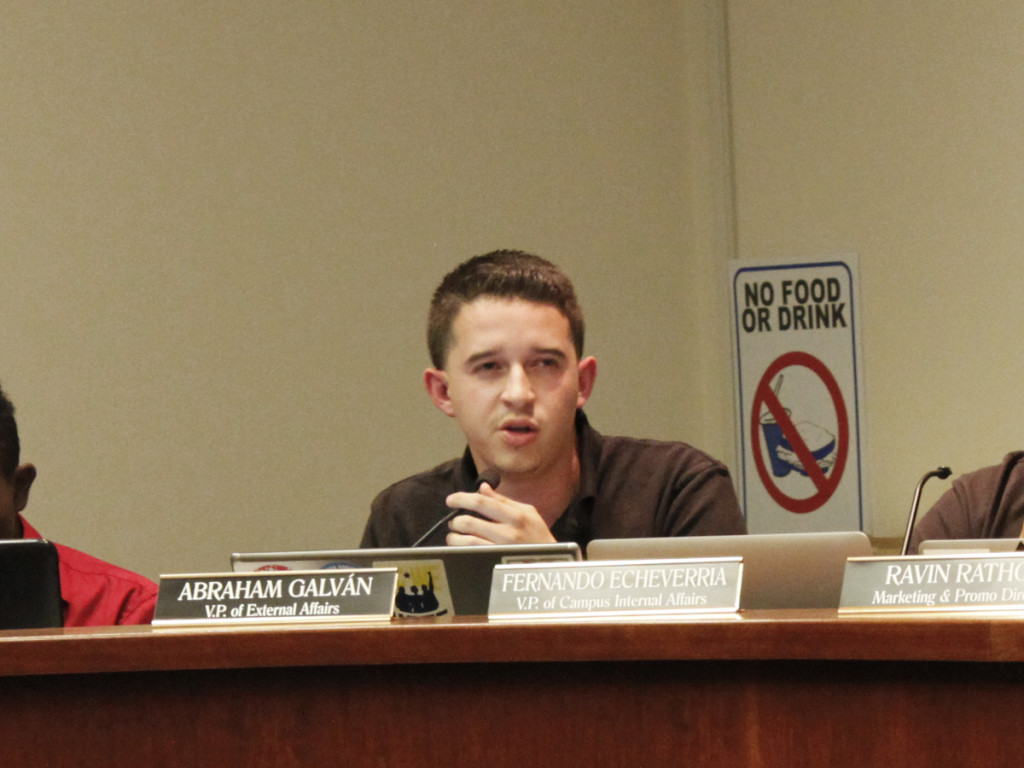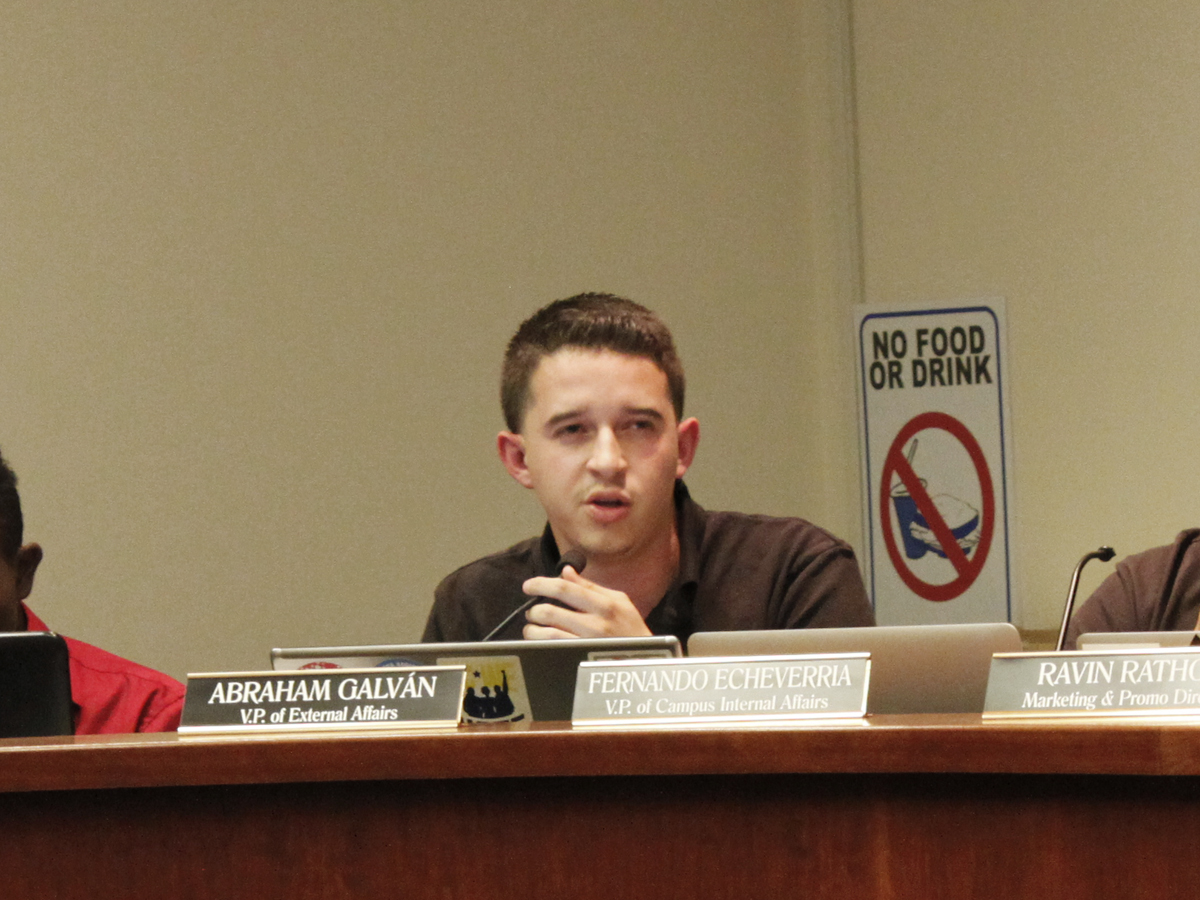
The issue of rising tuition within the UC system was the main focus of last Wednesday’s senate meeting. Both President Nafi Karim and Vice President of External Affairs Abraham Galvan were vocal opponents of UC President Janet Napolitano’s proposed stability plan, which would hike UC tuition by up to 5 percent every year for five years.
Karim, reporting from a meeting of the UC Council of Presidents, felt bothered that the financial data and information about the tuition plan was not clearly accessible during the meeting. Nonetheless, Karim rejected the tuition increase. “Like countless other UC students, I know firsthand the burden such tuition increases can put on students,” expressed Karim. “I will graduate with $62,984 in debt.”
Increasing the enrollment of 5,000 more students is a goal of the UC tuition hike. Karim further explained, “The UC says the increase of these students increased the need for services such as mental health services, improvement in student-to-faculty ratio, increase in class availability in order to decrease time of graduation.”
To combat backlash to the proposal, the UC points out that its Blue and Gold Plan currently covers the full tuition of 55 percent of UC students (65 percent at UCR) and partially gives coverage to 14 percent of students, according to Karim.
Galvan expressed that this is not enough assistance and that many students would still need to take out numerous loans. “Student loan debt has already surpassed one trillion dollars,” stated Galvan. “I fail to see how this plan gives us any more stability then we have now even if we get that 4 percent increase (in state funding annually for the next two years) promised by Gov. Jerry Brown.”
Galvan reported that the average tuition per year for a UC at $13,200 was already significantly higher than the average tuition for public four-year universities nationwide, at $8,893. “Napolitano’s 5 percent every year in five years plan could potentially lead to a 28 percent increase in tuition overall,” expressed Galvan.
According to UC officials, state disinvestment is a motivating factor behind this increase in systemwide tuition. Vice Chancellor for Planning and Budget Maria Anguiano expressed that “the state used to pay 80 percent of our total costs. Now it’s down to 42 percent. When it is that decreased, we only have so many funding sources to keep the same quality of education.”
In a letter sent to Napolitano and the UC regents, The Council of UC Faculty Associations (CUCFA), which represents UC faculty on a state- and university-wide level, demanded that, “Tuition should (be) … rolled back to 2001-2002 levels, inflation adjusted ($4,717 for the University of California compared to the $13,860 planned for UC next year) … It would cost the median California household just $50 a year.”
From 2001 to 2002, Gov. Gray Davis allocated state funding of $3.2 billion ($4.4 billion in 2014 dollars) to the University of California. In that academic year, tuition was $3,964.
The CUCFA analyzed state funding over the decade and noted that Gov. Brown’s 2014-2015 budget will only allot $2.8 billion for the UC. That is more than one-third less than Gov. Davis’ 2001 to 2002 financial allocations despite having a UC student enrollment increase of over 50,000 students in the same time.
“When (state funding) is that decreased, we only have so many funding sources to keep the same quality of education,” said Anguiano.
Ways in which students could combat this and be heard was also discussed. Both Karim and Galvan said that students need to have full access to the information and data regarding the finances of the UC. “When there is no student consultation beforehand, that is problematic,” addressed Galvan. “We need to have information before (the Board of) Regents can vote.”
Galvan says another way that students can advocate their opposition to the proposal is to participate in a walkout on Nov. 18 at 11:15 a.m. and rally near the Bell Tower. Galvan explained that students refuse to be “made political pawns between the government and the UC.”
Highlights
- Vice President of Internal Affairs Fernando Echeverria discussed changes in the UCR and general UC admission system in which holistic reviews of students may be implemented as early as next year. UC admissions will now include reviews by a faculty board; prior to this, admissions were granted based on meeting UC requirements.
- The California Public Research Interest Group, a nonprofit public policy group, presented their victories to the senate in banning California plastic bags, which will be fully implemented in January of 2015.
- Senator Reem Blaik presented an initiative to highlight Women’s Awareness Month through a series of events focused on issues such as equal working rights and misconceptions surrounding feminism.








